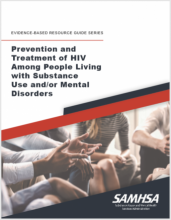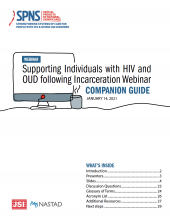
Data partnerships help coordinate HIV and opioid use disorder (OUD) services across state programs. These relationships can help state agencies identify service overlap and gaps, identify common goals, and initiate collaboration.



Data partnerships help coordinate HIV and opioid use disorder (OUD) services across state programs. These relationships can help state agencies identify service overlap and gaps, identify common goals, and initiate collaboration.
State health departments must dedicate staff and time to ensure a consistent approach to HIV and opioid use disorder (OUD) service delivery. For some states, this means creating new staff roles.
This guide offers considerations for how state agency staff can develop and maintain an accessible, HIV and opioid use disorder (OUD) service inventory. This guide can be used by state agency HIV and OUD staff to:
Individuals who have HIV who also use drugs experience increased age-matched morbidity and mortality in comparison with those with HIV who do not use drugs.
This document describes the critical role that peers have in developing and delivering care for people with HIV and OUD and how a state’s Medicaid program can serve as an essential fiscal resource in supporting peer services.